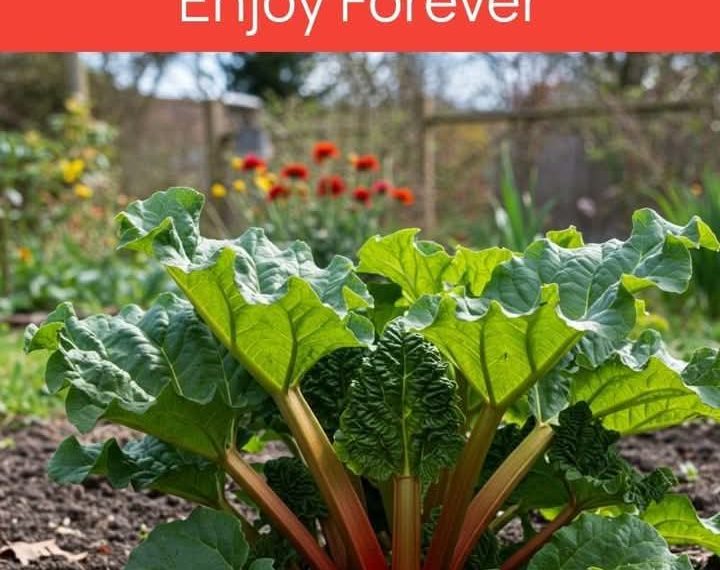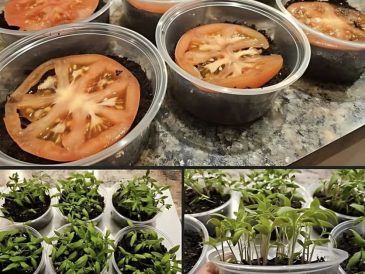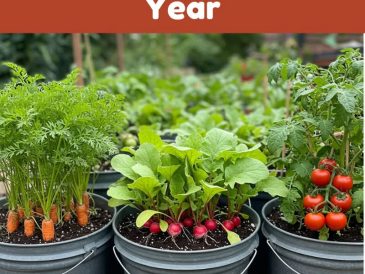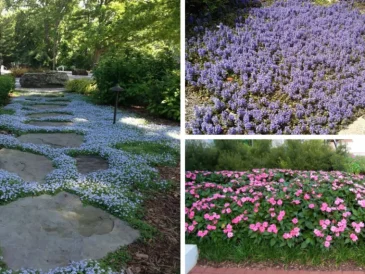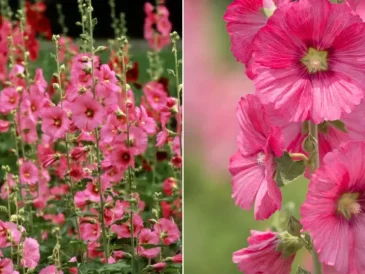When it comes to growing your own vegetables, many gardeners opt for annual plants that need to be replanted every year. However, perennial vegetables can be an excellent choice for those looking to establish a low-maintenance, long-lasting garden. Perennials come back year after year, saving you time and effort while providing a reliable harvest. Here are ten perennial vegetables that you can plant once and enjoy for many seasons to come.
1. Asparagus (Asparagus officinalis)
Asparagus is one of the most well-known perennial vegetables. Once established, it can produce spears for up to 20 years or more, making it a highly productive investment. Asparagus thrives in full sun and well-drained soil. However, it takes a few years to establish, so be patient. Once it’s ready, you can harvest the spears each spring and enjoy them in a variety of dishes, from salads to stir-fries.
Growing Tips:
- Plant crowns in early spring, 6-8 inches deep.
- Asparagus needs space, so plant them about 18 inches apart.
- Be sure to let them grow for at least two seasons before harvesting to allow them to establish a strong root system.
2. Rhubarb (Rheum rhabarbarum)
Rhubarb is a hardy perennial that produces tart, edible stalks. While the leaves are toxic, the stalks are great for making pies, jams, and sauces. Once planted, rhubarb can produce for up to 10 years. It’s best to harvest the stalks in the spring before they start to flower. Rhubarb prefers full sun and well-drained soil.
Growing Tips:
- Plant rhubarb crowns in early spring, spacing them 3-4 feet apart.
- Mulch around the base of the plants to help retain moisture.
- Be cautious not to overharvest in the first few years; this allows the plant to establish a strong root system.
3. Jerusalem Artichoke (Helianthus tuberosus)
Also known as sunchokes, Jerusalem artichokes are a type of sunflower that produces edible tubers. These tubers are sweet, nutty, and can be used in soups, stews, or roasted. Jerusalem artichokes are hardy and drought-tolerant, making them a great option for low-maintenance gardeners. They spread easily, so be mindful of where you plant them.
Growing Tips:
- Plant tubers in early spring, about 2-3 inches deep.
- Space them about 12 inches apart to allow for their spread.
- They prefer full sun and can handle a variety of soil types, though they thrive in well-drained, fertile soil.
4. Chives (Allium schoenoprasum)
Chives are a fragrant, easy-to-grow perennial herb that can also be used as a vegetable. The tender leaves are great for garnishing salads, soups, and more. Chives come back every spring, and with their mild onion flavor, they add a fresh, flavorful punch to a variety of dishes.
Growing Tips:
- Plant chives in well-drained, fertile soil.
- Space them about 12 inches apart to allow for growth.
- Once established, chives will self-seed and come back year after year.
5. Garlic Chives (Allium tuberosum)
Garlic chives, also known as Chinese chives, are similar to regular chives but have a distinct garlic flavor. They’re an excellent addition to your perennial vegetable garden, providing fresh, flavorful leaves throughout the growing season. The white flowers are also edible, and they can be used as a garnish in various dishes.
Growing Tips:
- Garlic chives prefer full sun and moist, well-drained soil.
- Space plants 6-8 inches apart, and they will spread naturally over time.
- These chives are winter-hardy and will regrow each year.
6. Kale (Brassica oleracea var. sabellica)
Kale is typically grown as an annual, but certain varieties, such as “Perpetual Kale” or “Daubenton’s,” are actually perennial. These kale plants will continue to produce leafy greens for many years. Kale can be harvested throughout the growing season, making it an excellent choice for continuous greens in your garden.
Growing Tips:
- Plant kale in well-drained, fertile soil with plenty of compost.
- Space plants about 18 inches apart to allow for proper airflow.
- Perennial varieties are more winter-hardy than annual kale and can withstand light frosts.
7. Sea Kale (Crambe maritima)
Sea kale is a hardy perennial that thrives in coastal areas, but it can be grown in most climates. The plant produces edible leaves, stems, and flowers, which have a flavor similar to cabbage. Once established, sea kale can produce for several years, making it a versatile addition to your vegetable garden.
Growing Tips:
- Sea kale prefers a sunny location with well-drained soil.
- Space plants about 18 inches apart to allow for growth.
- The plant benefits from regular watering but does not like soggy soil.
8. Lovage (Levisticum officinale)
Lovage is a perennial herb with a flavor reminiscent of celery, making it an excellent choice for soups, stews, and salads. This plant grows tall and can reach up to 6 feet, producing aromatic leaves and flowers. Once planted, lovage can last for several years, giving you a steady supply of leaves to harvest.
Growing Tips:
- Lovage prefers full sun and rich, moist soil.
- Space plants about 18 inches apart to allow for growth.
- It’s a great companion plant for other vegetables, as it helps repel certain pests.
9. Perennial Spinach (Veldt Green or New Zealand Spinach)
Perennial spinach, also known as New Zealand spinach, is a tender leafy green that grows year-round in mild climates. It can be used in a similar way to spinach in recipes and is perfect for continuous harvesting. Unlike traditional spinach, perennial spinach is more heat-tolerant, so it’s a great option for gardeners in warmer climates.
Growing Tips:
- Plant perennial spinach in full sun and well-drained soil.
- Space plants about 12 inches apart.
- The leaves are best when harvested young and tender before the plant starts flowering.
10. Sweet Potatoes (Ipomoea batatas)
While sweet potatoes are typically grown as annuals, some varieties, such as the “O’Henry” sweet potato, are perennial in warm climates. These plants produce sweet, starchy tubers that can be harvested in the fall. Once established, sweet potatoes will continue to grow and produce for several seasons.
Growing Tips:
- Sweet potatoes require a warm growing season and are best suited for zones 8 and above.
- Plant slips (young plants) in well-drained, fertile soil.
- Sweet potatoes need space to spread, so plant them 12-18 inches apart.
Conclusion
Growing perennial vegetables can save time, money, and effort in the garden. These plants offer the convenience of producing food year after year without the need for replanting each season. Whether you’re looking for a fresh, flavorful garnish or a hearty meal, these 10 perennial vegetables will reward you with years of harvest. By adding these long-lasting plants to your garden, you’ll enjoy a more sustainable and low-maintenance gardening experience.

